Welding pipe and tubes can be highly challenging, and the difficulty rises once you work in harsh conditions, uncomfortable positions, or with limited vision.
Specific industries, such as aerospace, food processing, or pharmaceutical, require high-quality, repeatable welds, which are sometimes hardly achievable due to the sole nature of the job.
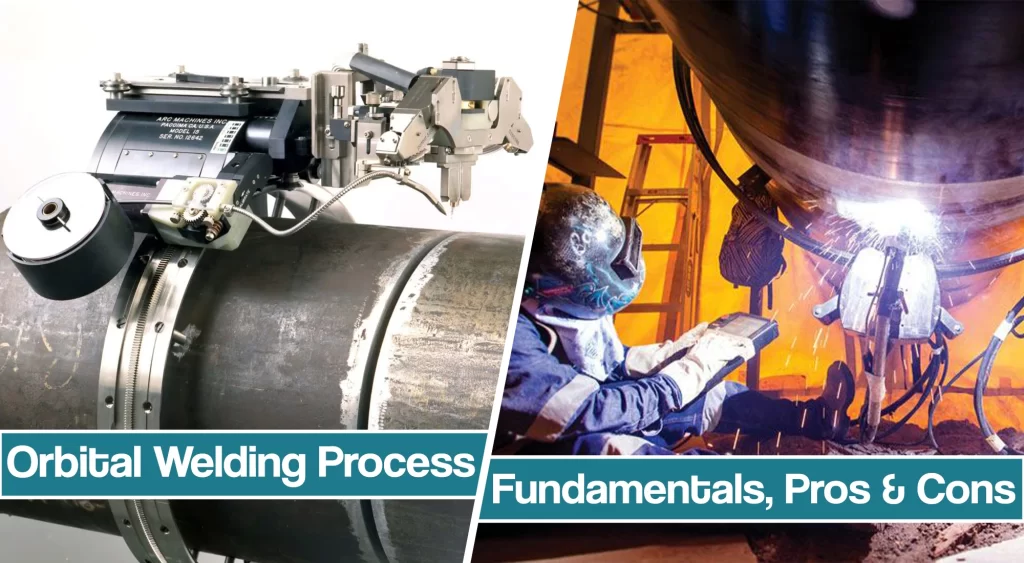
That’s why the orbital welding process was invented, as it was meant to replace manual welding and limit the poor results caused by operator error.
In this article, we will closely explain what is orbital welding and its applications and advantages.
Key Takeaways
- What is orbital welding used for?
Orbital welding is primarily used in joining pipes and tubes in different industries, such as food processing, pharmaceutical, or aerospace. In addition, it can be used in the semiconductor industry due to the cleanliness of the welds.
- What is orbital pipe welding?
Orbital pipe welding is an automated process that utilizes a special weld head with a wire feeder to weld thicker pipes and fill larger joints with filler material.
- Who invented orbital welding?
Rodrick Rohrberg of North American Aviation invented the orbital welding procedure. His goal was to deal with fuel and hydraulic fluids leaking in the X-15 Rocket Research plane.
What is the orbital welding process – Detailed Explanation
Orbital welding is a mechanized process where dedicated equipment rotates 360° (or 180° in double-up welding) around a fixed workpiece. While it can apply different welding processes (MIG welding or fusion welding), 98% of orbital welding equipment is aimed at gas tungsten arc welding (TIG welding).
As a result, the orbital welding process produces uniform weld results in tube-to-tube, pipe-to-pipe, and tube-to-tube sheet joining.
The good side of orbital welding is that the operators can get repeatable and high-quality results every time.
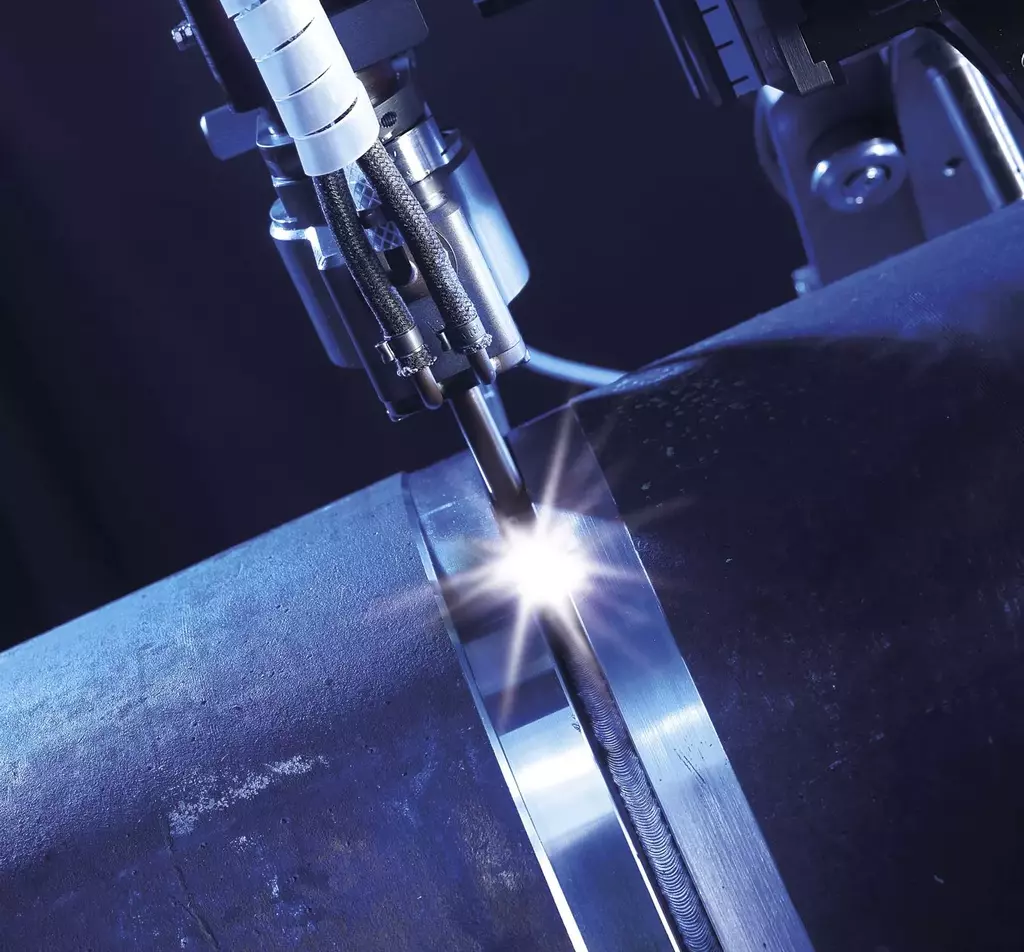
While the process is today commonly used to join pipes and tubes, orbital welding was initially developed by the aerospace industry in 1960. Roderick Rohrberg of North American Aviation developed the process to deal with fuel and hydraulic fluid leakages in the X-15 rocket research plane.
While its use at the beginning was limited, there were specific improvements over time. For example, inventors improved control systems, portability, and power supplies in the 1980s. As a result, orbital welding has seen more comprehensive application and portability to transport welding machines between construction sites.
Equipment Needed for Orbital welding
Orbital welding equipment can be divided into two primary types: fusion equipment and pipe welding equipment with a wire feeder.
Fusion gear is usually more compact and aimed at joining smaller pipes with autogenous bonding. When joining thicker pipes or tubes, the gap is larger, so to fill it, welders need filler wire and yes, pipe welding equipment.
Regardless of the type, the equipment includes a power supply, welding head, and cooling system. While types differ in power supply options and weld heads, the biggest difference is that pipe weld head also has a wire feeder.
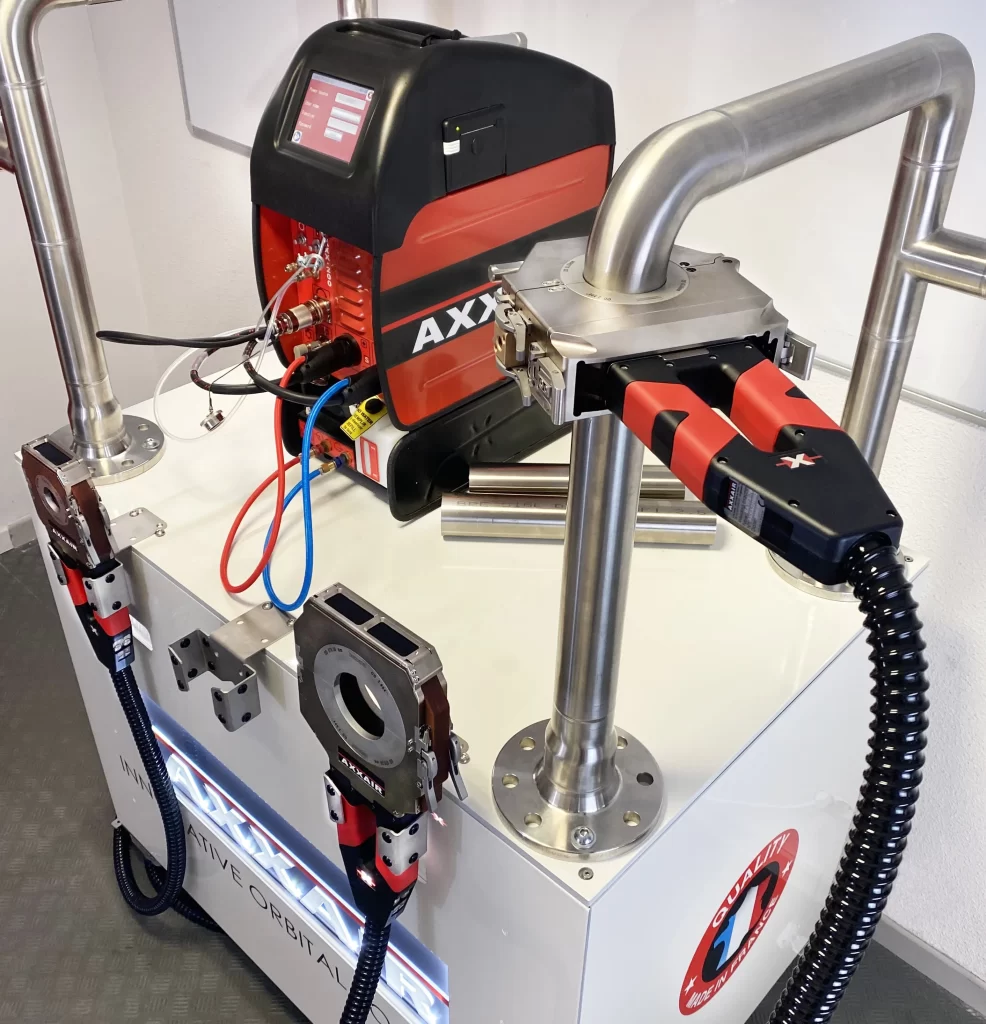
Power Supply Unit
The power supply unit in orbital welding is fully programmable, and the operators can set and store welding parameters such as welding current, pulse, shielding gas flow, welding speed, or wire feed speed. Once you tweak the best results, you can use the orbital welding system over and over again to get uniform welds.
Keep in mind that there are different orbital welding power supply units, which vary in power, size, and available options.
- Portable machines: as their name states are usually lightweight (less than 60 lbs) and compact enough to fit through a manhole. However, they are commonly rated up to 160 amps, making them suitable for thinner pipe welding and applications. These machines will require a 1-phase, 230V power input, and they are usually capable of setting 4 types of parameters.
- Medium-sized machines: provide more power, as they are commonly rated up to 400 amps. As a result, they are suitable for thicker pipes and tube welding but with a cost of limited portability. To output higher power, the orbital welder will require a three-phase 415V input, but it allows operators to set up to 6 different parameters.
- Full-sized machines: are industrial workhorses that are aimed at extreme heavy-duty applications requiring up to 600 amps or power. These are usually fixed machines that require three-phase 415V or multi-voltage input, but they offer control of over 6 different welding settings.
Welding Head
The weld head is another essential part of the orbital welding system, as it holds the electrode which rotates around the pipe, transmits current, and controls the heat and input controls.
In addition, the orbital welding head holds pieces in place, making sure they are perfectly aligned and stable.
The fusion orbital welding head is usually smaller, and it encloses the tubing. A fully enclosed weld head is used for single-pass welding, and it requires square butt end prep.
Since fusion welding uses the insert ring principle, it is commonly limited to joining pipes up to 6 inches, and schedule 5 pipes. The maximum wall thickness for fusion welding is .120”
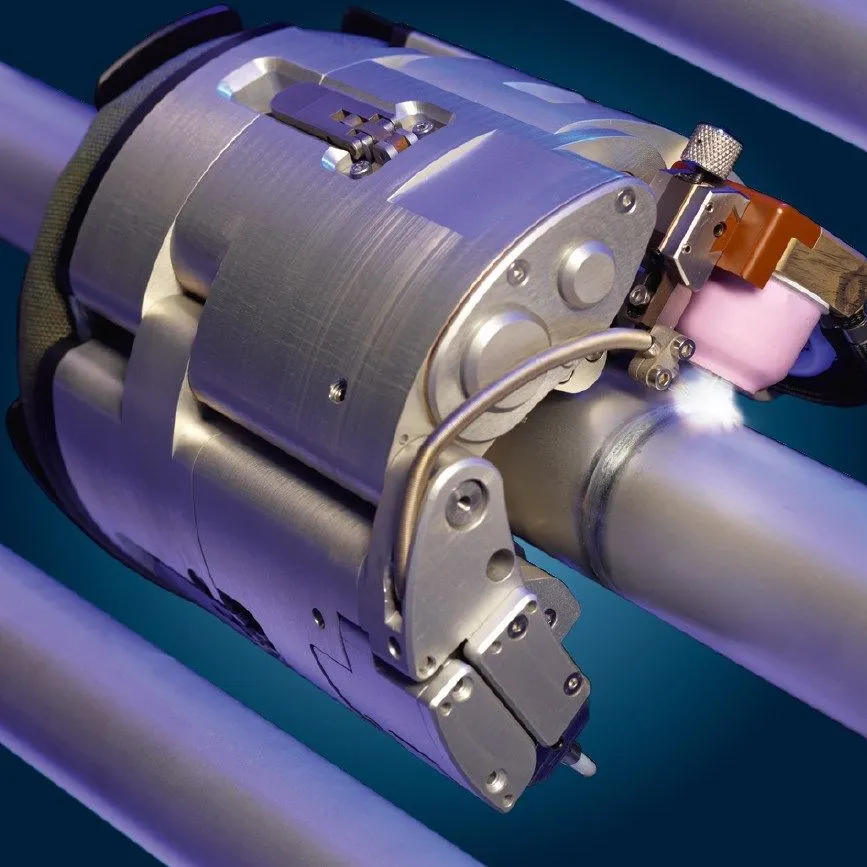
The orbital pipe welding head is open and a bit more robust, as it includes a torch that rotates around the pipe and a wire feeder. The feeder can be a part of the welding head or a separate system, but the welded wire feeder makes this head bulkier. Nonetheless, this type is used in welding significantly thicker pipes, where it requires a J bevel end prep. The addition of a wire feed mechanism will allow operators to deposit more filler metal into bigger gaps with multiple welds. The clamping style of orbital pipe head ranges from .5” to around 6.625”, and it can be used to weld pipes of 0.5″ with no maximum limit.
Cooling System
A coolant system is an essential part of an orbital welding machine, as it protects it from overheating. Depending on applications, orbital welding machines can utilize either air or water cooling. The sole purpose is to prolong the duty cycle, allowing the system to travel all around the pipe before overheating.
The water cooler flows through the coolant lines and into the weld head. As a result, a weld head can run at 100% duty cycle, meaning it won’t damage the internal components.
Orbital Welding Procedure
The orbital welding procedure takes some time in weld preparation and ensuring the right parameter, but once you get things right, you can achieve excellent weld quality every single time. Firstly, you will need to carefully prepare, cut, and clean the workpieces, then input parameters, and finally, weld.
Preparing The Pieces
Cutting, cleaning, and facing thin pipes is essential when dealing with smaller and delicate pipes made of stainless steel, but weld preparation is present even with thicker parts. Thick pipes will require J beveling the joint and removing the mill scale. Both thin and thick workpieces must be perfectly aligned before welding, and weld heads will ensure clamping to a tight fit.
As part of the preparation, you should also choose a tungsten size and filler wire according to the properties of the base metal. As the quality of the weld is essential, operators must employ purging, where shielding gas, commonly pure argon or argon/helium mixture, ensures oxygen cannot interfere with a weld pool.
Welding Parameters
After careful weld preparation, welders program the power source, inputting welding current, pulse, travel speed of the head, voltage oscillations, wire feed speed, and more. As you might have noticed, the number of available controls will depend on the selected power source.
Understanding each one of these, such as arc length, current magnitude, pulse frequency, the welding speed, will help welders get the best result. In addition, welding operators must be aware of the type of parent and filler wire materials, the welding gases, and thermal conductivity.
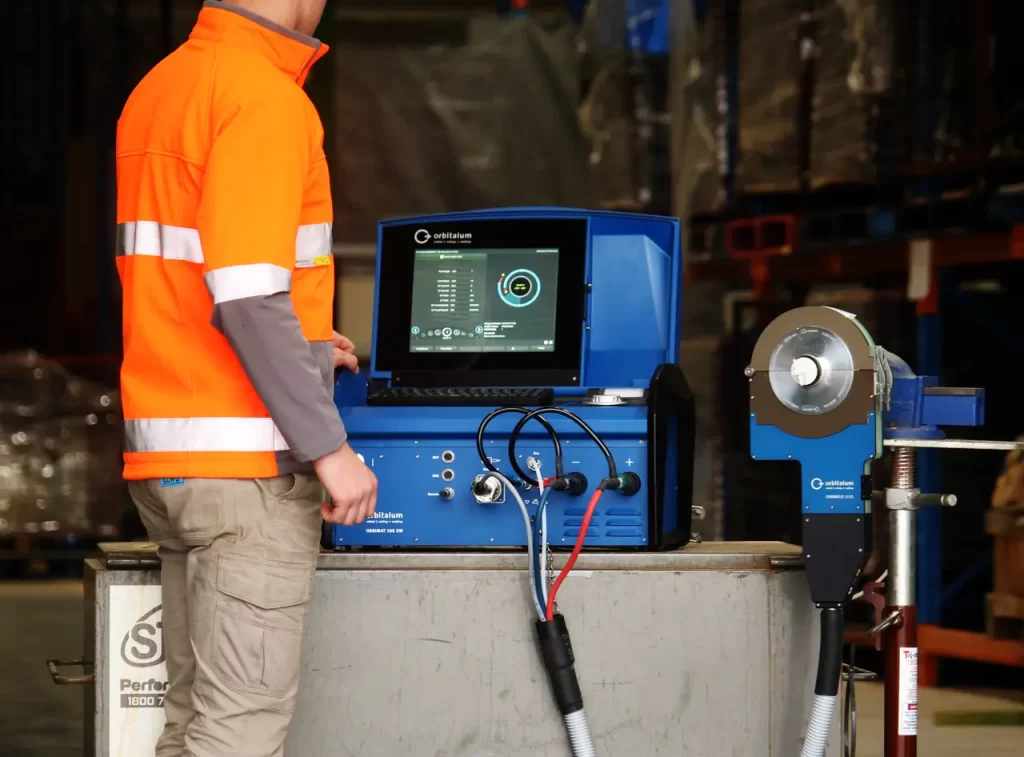
Even though the orbital procedure is an automated welding process, there are certain variables that operators must observe and adjust parameters properly. Hence welders that operate orbital welding machines have to go through extensive training and acquire certifications.
Orbital Welding
Once everything is set in place, operators start welding by pressing a start button. The Weld head will rotate at a selected angle, ensuring the perfect weld according to weld parameters.
Nonetheless, even though it is a fully automated process, operators must observe and look for defects in the weld. Even though they are rare, some tweaking or better preparation is required. But, with everything said, it is much faster and more reliable than manual welding, which depends on welding techniques.
If you consider a career in orbital welding, feel free to check out our detailed article that explains orbital welding training and certification.
Applications Of Orbital welding
Orbital welding can potentially be used to weld any tube or pipe that transfers fluid or gases during the manufacturing process.
As a result, it can be used in the semiconductor and pharmaceutical industries, food and beverage, nuclear piping, and aerospace industry. Many of these industries have critical applications of piping, and that’s where orbital welding thrives.
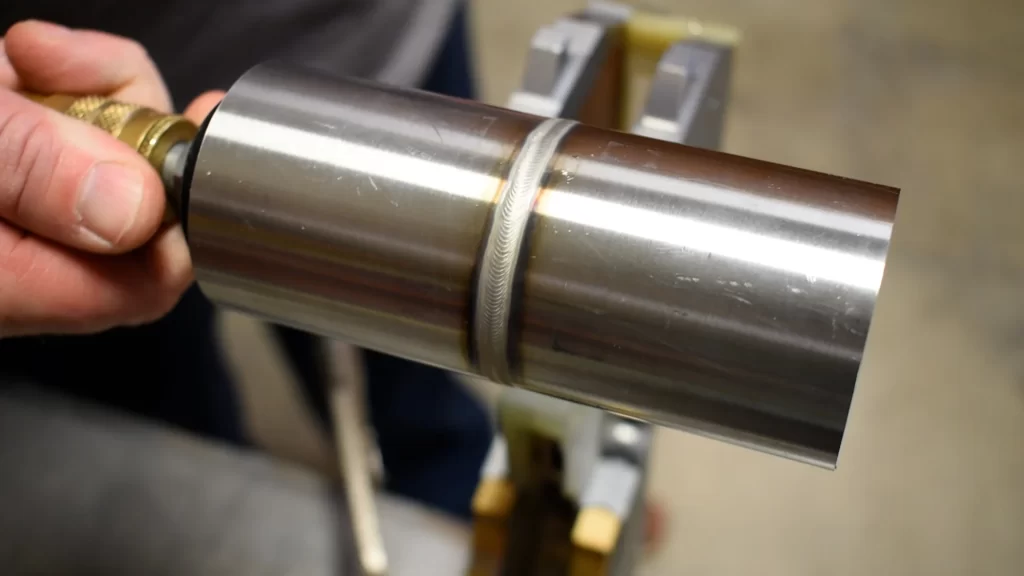
- Food, Dairy and Beverage Components need to meet sanitation and safety standards. Therefore, orbital welding produces smooth welds with a good amount penetration and reliability.
- Orbital welds are used for semiconductors, where they offer efficient batch welds. The smooth surfaces and prevent the build-up of contaminants, ensuring te best results.
- Orbital welding was developed and still used in the aerospace industry, as the achieved welds have proven reliable in applications associated with flying at altitude.
Advantages and Drawbacks
Advantages of Orbital Welding
- Orbital TIG welding is significantly more reliable, and the welds are uniform compared to manual TIG welding
- The welding power supply is programmed to give the same results every time, making it a highly repeatable and uniform process
- There is no place for operator error, as it is an almost fully automated welding process
- Requires less skilled welders, as the operators can be trained more quickly and efficiently
- Orbital welding offers excellent safety for welders, as they are not exposed to harsh conditions, and the welding arc rotates around the pipe, so welders don’t have to
- Once you get the hang of the parameters, orbital welding is quick and efficient
Drawbacks of Orbital Welding
- The equipment is significantly (5-10 times) pricier compared to conventional welding equipment
- Use is limited to welding pipes and tube welding
- Requires several different welding heads for different materials
Final Thoughts
Orbital welding is a mechanized process that made pipe and tube welding significantly easier and more reliable. As a result, it offers excellent workplace safety, and thrives in applications where weld quality is crucial. Tungsten inert gas (TIG welding) can be done without room for operator error.
On the other hand, this welding technique is limited to welding pipes and tubes, and since the equipment is much pricier, it isn’t suitable for everyone. While high productivity can be cost-efficient, it is not a good investment in small-scale businesses.
Resources:
- https://www.twi-global.com/technical-knowledge/faqs/what-is-orbital-welding
- https://blog.morganitech.com/what-is-orbital-welding-how-does-it-work
- https://www.orbitalft.com/ultimate-guide-to-orbital-welding/
- https://www.wermac.org/others/welding_orbit.html
- https://www.highpurity.com/orbital-welding/process





